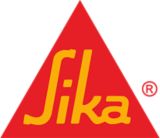Sikasil®-403 Fire
Fire-rated silicone joint sealant
Sikasil®-403 Fire is a fire rated, silicone based, 1-component, UV-resistant, moisture-curing, low-modulus elastic joint sealant for external and internal applications.
Suitable for use in hot and tropical climatic conditions.
- Up to 4 hours fire resistance according to EN 1366-4
- Fire resistance tests passed according to EN 1363-1
- Particularly good resistance to weathering
- Movement capability of ± 50 % (ASTM C 719)
- Good adhesion to various substrates
- Neutral curing
- Low VOC
